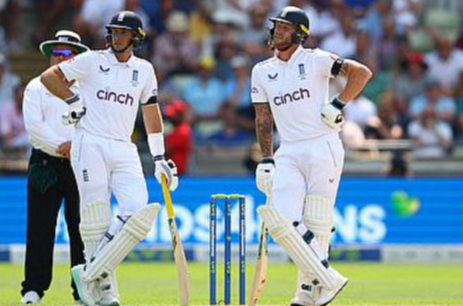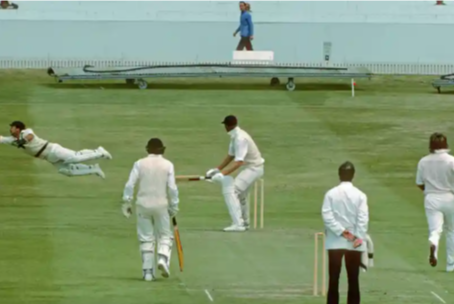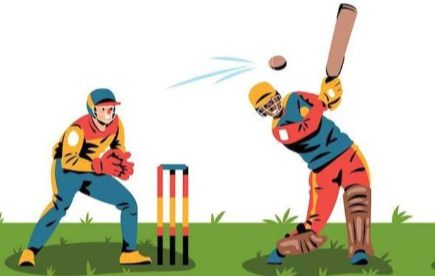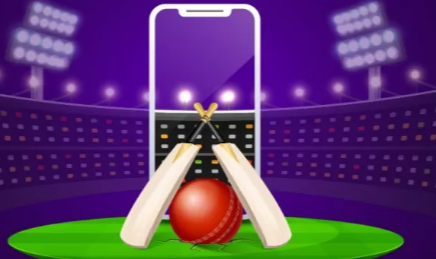The Impact of Technology on Modern Cricket: DRS and Beyond
The integration of technology in cricket has transformed the game in numerous ways. The Decision Review System (DRS) stands out as a significant advancement, enhancing the accuracy of on-field rulings. However, the implications of technological innovations extend beyond DRS. From real-time analytics to virtual reality training, these tools are reshaping player development and fan interaction. What other changes lie ahead in this ever-evolving landscape? The answers may redefine the essence of cricket itself.
The Evolution of Cricket Technology
As technology continues to advance, it has profoundly transformed the landscape of cricket, reshaping how the game is played, officiated, and experienced by fans.
Historical comparisons reveal that earlier cricket relied on rudimentary tools, while today’s innovations, such as wearable technology and mobile applications, enhance player performance and fan engagement.
Broadcasting innovations have revolutionized how matches are viewed, allowing fans to connect through social media, enriching the overall experience.
Virtual reality serves as a modern training tool, providing immersive environments for skill development and injury prevention.
Furthermore, these advancements improve game accessibility, making cricket more inclusive for a diverse audience.
The evolution of technology in cricket represents a significant shift, emphasizing the sport’s adaptability in a rapidly changing world.
Read more: Famous Cricket Legends and Their Greatest Moments on the Field
Understanding the Decision Review System (DRS)
The Decision Review System (DRS) has emerged as a pivotal innovation in modern cricket, fundamentally altering how players and officials interact with the game’s decision-making processes.
Its implementation allows teams to challenge on-field decisions, introducing a layer of technology that enhances fairness.
However, DRS challenges have sparked DRS controversies, particularly regarding its accuracy and the interpretation of DRS rules.
The effectiveness of DRS technology, which includes ball tracking and ultra-edge systems, has been debated among players and fans alike.
While the DRS impact has generally been positive in reducing incorrect calls, there remains a need for ongoing DRS feedback to refine its application.
Understanding DRS history is essential to appreciate its role in shaping contemporary cricket dynamics.
The Role of Ball-Tracking Technology
Ball-tracking technology has revolutionized the way decisions are made in cricket, providing a sophisticated method for analyzing the trajectory of the ball after it has been delivered.
This technology employs high-speed cameras and advanced algorithms to create a visual representation of the ball’s path, facilitating accurate pitch analysis. By assessing variables such as angle, speed, and deviation, ball-tracking systems enable umpires to make informed decisions regarding lbw appeals and other critical moments.
Furthermore, this technology enhances the viewing experience for fans, allowing them to appreciate the intricacies of bowling and batting strategies.
As cricket continues to evolve, ball-tracking technology stands as a testament to how innovation can empower players and officials alike, ensuring fairer outcomes on the field.
Ultra-Slow-Motion Replays and Their Impact
Ultra-slow-motion replays have revolutionized the accuracy of decision-making in cricket, allowing umpires to scrutinize critical moments with unprecedented precision.
This technology not only aids in correcting on-field decisions but also serves as a valuable tool for players and coaches to analyze performance intricacies.
Consequently, the integration of ultra-slow-motion replays has significantly enhanced both the fairness of the game and the developmental aspects of player skills.
Enhanced Decision Accuracy
Advancements in technology have revolutionized decision-making processes in modern cricket, particularly through the introduction of ultra-slow-motion replays.
These replays utilize sensor integration to capture intricate details, allowing officials to scrutinize every aspect of a delivery or a dismissal with unprecedented clarity. The accuracy improvement offered by this technology significantly reduces the margin of error in crucial decisions, such as LBWs or catches.
By providing a comprehensive view of the action, ultra-slow-motion replays enhance the overall fairness of the game, fostering a sense of trust among players, officials, and fans alike.
As cricket continues to evolve, the reliance on such technologies underscores a commitment to ensuring that the spirit of the game remains intact while embracing the merits of modern innovation.
Player Performance Analysis
The integration of ultra-slow-motion replays has significantly transformed player performance analysis in cricket. These advanced technologies allow for meticulous skill assessment, providing coaches and analysts with detailed player statistics that facilitate the establishment of performance benchmarks.
Such insights are invaluable training tools, enabling tailored coaching strategies that enhance player capabilities. Furthermore, ultra-slow-motion replays aid in fitness tracking and injury prevention by highlighting biomechanical flaws that could lead to physical setbacks.
This technology also plays a crucial role in player scouting and talent identification, as it enables teams to evaluate potential recruits through match simulations.
Ultimately, the profound impact of ultra-slow-motion replays fosters a culture of continuous improvement, ensuring that players reach their optimal performance levels.
Real-Time Analytics: Enhancing Game Strategy
Real-time analytics has revolutionized decision-making in cricket by providing teams with immediate access to performance metrics.
Coaches and players can now analyze data on batting averages, bowling speeds, and field placements as the game unfolds, allowing for strategic adjustments on the fly.
This data-driven approach enhances not only individual performance but also overall team dynamics, making it a critical component of modern cricket strategy.
Data-Driven Decision Making
As technology continues to evolve, its integration into cricket has transformed how teams strategize during matches.
Data-driven decision making has become pivotal, allowing teams to leverage real-time analytics for tactical advantages. With advanced data visualization tools, coaches and players can assess match conditions, player performance, and opposition tendencies swiftly.
This immediate access to information enhances performance forecasting, enabling teams to predict outcomes based on historical data and current scenarios. Consequently, teams can adjust their game plans dynamically, optimizing player roles and strategies throughout the match.
The shift towards data-centric approaches not only empowers decision-makers but also fosters a culture of continuous improvement, ensuring that teams remain competitive in an ever-evolving sport where precision and adaptability are paramount.
Performance Metrics Analysis
Performance metrics analysis serves as a cornerstone in modern cricket, where teams harness real-time analytics to refine their game strategies. By meticulously evaluating player statistics, coaches and analysts gain insights into individual and collective performances.
This data-driven approach allows teams to identify strengths and weaknesses, facilitating targeted training and strategic adjustments. Performance evaluation extends beyond mere numbers; it encompasses situational analysis, enabling teams to anticipate opponents’ tactics and adapt accordingly.
The integration of technology not only enhances the accuracy of assessments but also empowers players to optimize their skills. Consequently, the strategic use of performance metrics fosters a dynamic and competitive environment, ensuring that teams remain agile and responsive in the ever-evolving landscape of modern cricket.
The Effects of Technology on Umpiring Decisions
The integration of technology into cricket has significantly transformed the landscape of umpiring decisions, enhancing accuracy and fairness in the game. Tools such as the Decision Review System (DRS) provide umpires with advanced resources, enabling them to make more informed decisions.
This shift necessitates a reevaluation of umpire training, as officials must now adapt to the nuances of technology integration. The use of ball-tracking systems, ultra-edge technology, and real-time data has not only improved the decision-making process but has also fostered a greater sense of accountability among umpires.
Consequently, players and fans are more inclined to accept decisions, knowing that technology supports the human element of officiating. This evolution underscores the critical role technology plays in modern cricket.
Future Trends in Cricket Technology
While the current advancements in cricket technology have already reshaped the game, emerging trends promise to further revolutionize how cricket is played, analyzed, and experienced.
Wearable technology is set to enhance player performance by providing real-time data on physiological metrics, enabling personalized training regimens that cater to individual needs.
Additionally, virtual reality (VR) is poised to transform training environments, allowing players to simulate match scenarios in immersive settings. This technology not only aids skill development but also enhances mental preparedness.
As these innovations take root, they will empower players and coaches to optimize strategies and refine techniques, ultimately leading to a more dynamic and engaging cricket experience for both participants and fans alike.
Conclusion
In conclusion, the integration of technology in modern cricket, epitomized by the Decision Review System, has fundamentally transformed the game, enhancing fairness and accuracy. While some critics argue that technology could disrupt the human element of officiating, it is essential to recognize that technology complements rather than replaces human judgment, ultimately fostering greater trust in the sport. As cricket continues to embrace innovations, the balance between technology and tradition will shape the future of the game, ensuring its relevance in a digital world.





